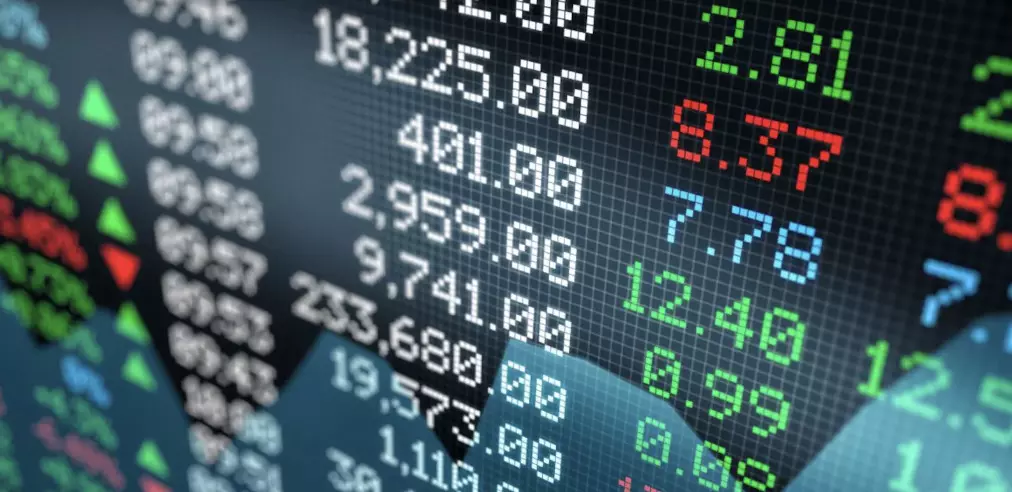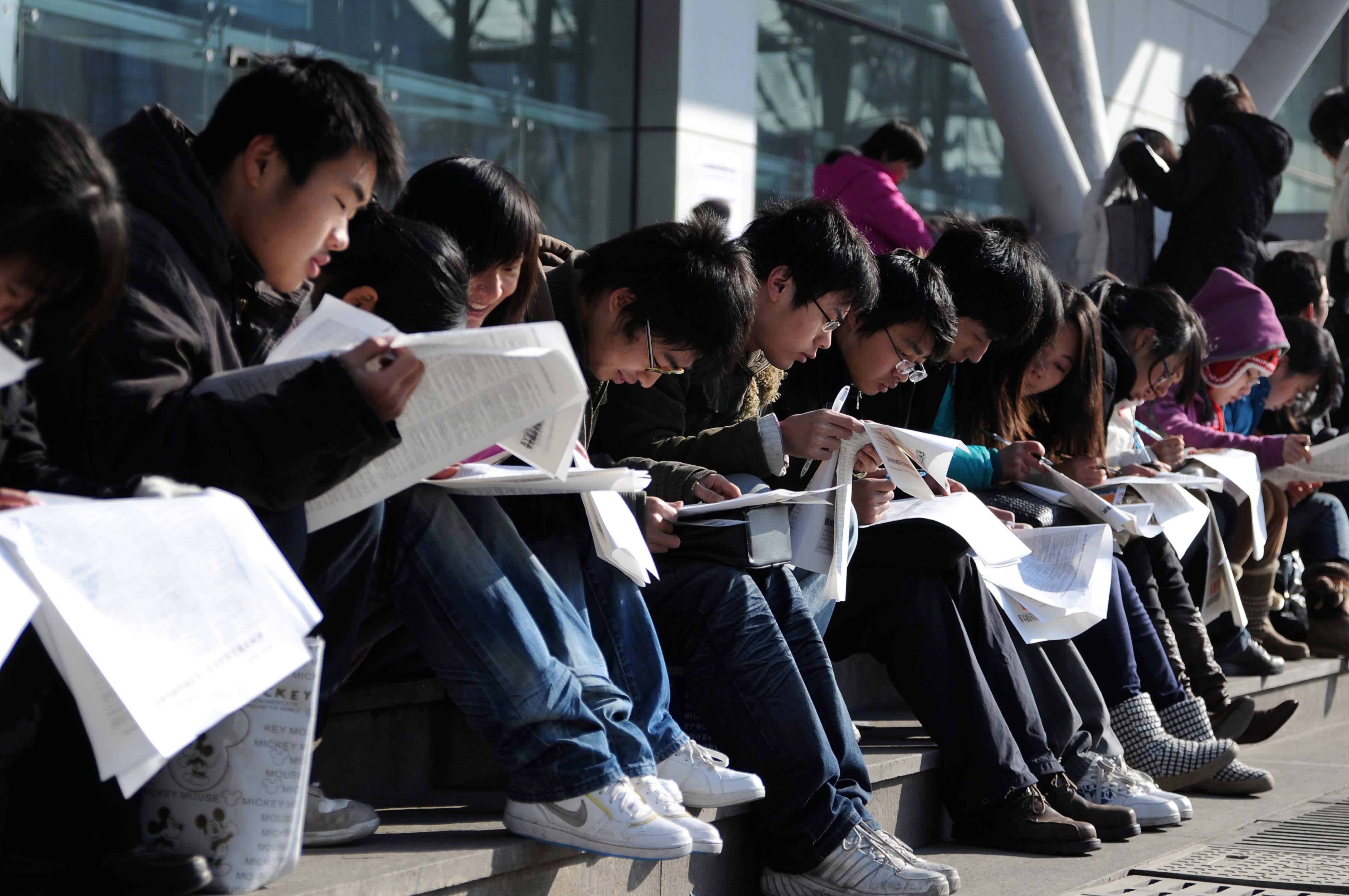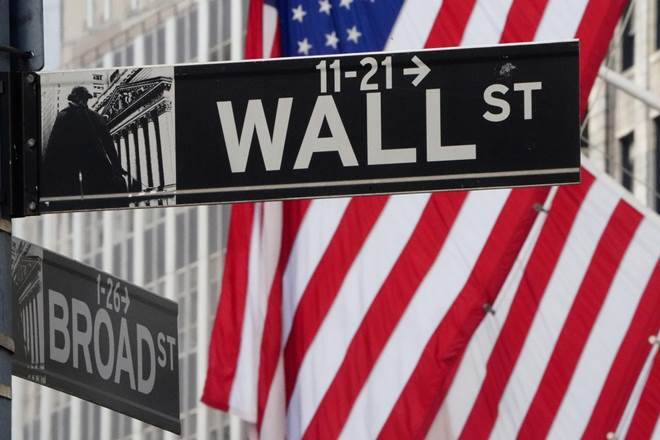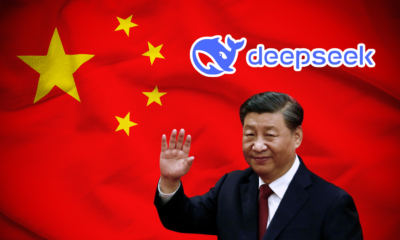Uncategorized
Global Markets Today. Key Developments Shaping The Global Economy And Financial Markets
Published
10 months agoon

Global Markets Today
As the world’s economies face the challenges of 2024, the latest headlines from across the globe are painting a picture of a volatile yet promising future.
From record numbers of young Chinese seeking the security of government jobs amid economic uncertainty to price cuts by Huawei in the tech sector, there are significant movements across industries and borders.
Meanwhile, South Korea faces disappointing factory output numbers, and the U.S. dollar continues to rise, strengthened by higher Treasury yields.
Here’s a comprehensive roundup of the leading stories shaping the global financial markets today:
1) Oil Prices Edge Higher in Thin Holiday Trade; Focus Shifts to China and U.S. Economic Data
Oil prices saw modest gains on Monday in thin holiday trading, with investors awaiting key economic data from China and the U.S. later this week to gauge the growth prospects of the world’s two largest oil consumers.
As of 0430 GMT, Brent crude futures rose by 5 cents, reaching $74.22 per barrel, while the more active March contract stood at $73.82 per barrel, up by 3 cents. U.S. West Texas Intermediate (WTI) crude added 3 cents, trading at $70.63 per barrel.
Both benchmarks gained approximately 1.4% last week, bolstered by a larger-than-expected decline in U.S. crude inventories for the week ending December 20. The drawdown was attributed to increased refining activity and higher fuel demand during the holiday season.
Market sentiment was also supported by optimism surrounding China’s economic recovery, which could drive up demand from the world’s largest oil importer. In an effort to stimulate growth, Chinese authorities have agreed to issue a record 3 trillion yuan ($411 billion) in special treasury bonds for 2025, according to Reuters.
Ryan Fitzmaurice, Senior Commodity Strategist at Marex, noted, “Global oil consumption hit an all-time high in 2024, despite China’s economic underperformance. With oil stockpiles at relatively low levels heading into next year, expectations are high for a rebound in China’s economic data, fueled by recent stimulus measures.”
Additionally, China has issued at least 152.49 million metric tons of crude oil import quotas to independent refiners for 2025, according to trade sources.
The World Bank recently raised its growth forecast for China in 2024 and 2025 but cautioned that challenges such as weak household and business confidence, coupled with ongoing issues in the property sector, will continue to pose risks.
Investors are closely monitoring China’s PMI factory surveys due on Tuesday, alongside the U.S. ISM manufacturing survey, which will be released on Friday.
European Energy Outlook: Russian Gas Transit Deal Unlikely
In Europe, hopes for a new agreement on the transit of Russian gas through Ukraine have dimmed after Russian President Vladimir Putin indicated on Thursday that there was insufficient time to finalize a deal before the year’s end. The potential loss of piped Russian gas is expected to lead to an increased reliance on liquefied natural gas (LNG) imports, analysts suggest.

2) Asia Markets
a) Shares Muted as High Yields Challenge Valuations
Asian stocks started the week with a muted performance on Monday, as elevated Treasury yields put pressure on rich equity valuations in Wall Street, while also supporting the U.S. dollar near multi-month highs. Trading volumes were light, influenced by the upcoming New Year holiday and a relatively quiet economic data calendar for the week.
The MSCI Asia-Pacific Index, excluding Japan, dipped 0.2%, but remains up 16% year-to-date. Japan’s Nikkei eased 0.9%, though it is still showing a 20% gain for 2024.
Shares of South Korean budget airline Jeju Air fell to their lowest level on record following a tragic plane crash that claimed 179 lives. Chinese blue-chip stocks gained 0.3%, maintaining an almost 16% gain for the year, with most of that surge occurring in September after Beijing unveiled new stimulus measures.
In Europe, Eurostoxx 50 futures rose 0.1%, while FTSE and DAX futures remained little changed. U.S. futures also saw slight declines, with both S&P 500 and Nasdaq futures off 0.1%. Wall Street experienced a broad-based sell-off on Friday, although volumes were lower than average.
The S&P 500 has risen 25% year-to-date, while the Nasdaq has gained 31%, prompting concerns over stretched valuations compared to the risk-free return on Treasuries. Investors are forecasting earnings per share growth of over 10% in 2025, down from the expected 12.47% rise for 2024, according to LSEG data.
b) Bond Yields and Dollar Strengthening Investor Sentiment
The yield on 10-year U.S. Treasuries has climbed to 4.631%, marking an eight-month high, and is set to end the year about 75 basis points higher than where it began, despite the Federal Reserve cutting rates by 100 basis points. Quasar Elizundia, a research strategist at Pepperstone, noted that the rise in bond yields, driven by expectations of a prolonged restrictive monetary policy, is raising concerns over corporate earnings growth in 2025, potentially affecting investment decisions.
Widening interest rate differentials have bolstered demand for the U.S. dollar, which has gained 6.5% against a basket of major currencies this year. The euro has depreciated by more than 5% against the dollar, trading at $1.0427, not far from its recent two-year low of $1.0344. The dollar also held near a five-month high against the yen, at 157.79, with only the risk of Japanese intervention preventing a test of the 160.00 mark.
c) Gold and Oil. Diverging Trends
The strength of the U.S. dollar has placed some pressure on gold prices, although the precious metal is still up 28% for the year, trading at $2,624 per ounce.
Meanwhile, oil prices have faced a more challenging year, with concerns over demand, particularly from China, capping gains. Brent crude rose 6 cents to $74.23 per barrel, while U.S. crude added 1 cent, trading at $70.61 per barrel. OPEC+ has been forced to extend its supply-limiting deal multiple times in response to these demand concerns.

2) Chinese Youth Flock to Civil Service Amid Economic Slowdown, But Risks Loom for ‘Iron Rice Bowl’ Jobs
A record 3.4 million young Chinese candidates have registered for this year’s civil service exam, drawn by the promise of lifetime job security and benefits such as subsidized housing. This surge, an increase of over 400,000 from last year and a tripling since 2014, illustrates the growing demand for stability among disillusioned Gen Z workers as the private sector struggles amid an economic slowdown and rising youth unemployment.
The civil service is often seen as a secure career option in China, earning the nickname “iron rice bowl” for its reputation for job stability. However, despite its relative immunity to layoffs, civil servants can still be dismissed for disciplinary violations. The appeal of these roles is growing as local governments face fiscal constraints, making it increasingly difficult to pay wages, which in turn fuels demand for the security the public sector offers.
3) Huawei Reduces Prices on High-End Devices Amid Tough Market Conditions
Huawei has slashed prices on a range of high-end products, including smartphones, tablets, watches, and headphones, by up to 3,000 yuan ($411). This move, announced via the company’s official Weibo account, came during the “Super Brand Day” promotion on JD.com, one of China’s leading e-commerce platforms. The sale ran from Saturday evening through Sunday midnight, highlighting Huawei’s efforts to maintain competitiveness in a challenging market environment.
The price cuts reflect Huawei’s strategy to adapt to ongoing pressures in the Chinese consumer electronics sector, which has been grappling with slowed demand and rising competition.
4) Japan’s Factory Activity Shrinks at Slower Pace in December
Japan’s manufacturing sector showed signs of stabilizing in December, with factory activity contracting at a slower pace. The final au Jibun Bank Japan Manufacturing Purchasing Managers’ Index (PMI) rose to 49.6 in December, indicating the softest contraction in three months. While the index remained below the 50.0 threshold separating growth from contraction, it reflected an easing of declines in both production and new orders compared to previous months.
Production shrank for the fourth consecutive month, although the pace of decline slowed. Subdued new orders, particularly in domestic and key overseas markets, were identified as the main contributors to the reduction in output. Some firms noted that the semiconductor sector’s weakness was also a factor behind the drop in new orders.
On a positive note, employment in the sector expanded in December, reversing a decline in November, reaching its highest level since April. Manufacturers attributed the increase to labor shortages and preparations for future demand. Input prices rose at their fastest pace since August, driven by higher costs for raw materials, labor, and the impact of the weak yen, which also fueled inflation.
In response, firms raised their output prices at the quickest rate in five months, maintaining confidence in their outlook due to expectations of growth driven by the launch of new products.
5) South Korea’s Factory Output Falls More Sharply Than Expected in November
South Korea’s factory output dropped more than anticipated in November, reflecting slowing exports and diminishing business confidence.
According to government data released on Monday, industrial output fell by 0.7% on a seasonally adjusted basis, following no change in the previous month. This decline was steeper than the 0.4% drop forecast by economists in a survey.
On an annual basis, the index showed a modest 0.1% increase, which was a sharp slowdown from the 6.3% gain in October and well below the 0.4% expected by analysts. The downturn in factory output comes amid a broader economic slowdown, as South Korea’s export growth hit a 14-month low, driven by decreased shipments to key markets like the United States and China, exacerbated by ongoing tariff uncertainties.

1) US Markets
a) Dollar Strengthens Amid Rising U.S. Treasury Yields
The U.S. dollar continues to dominate, bolstered by rising U.S. Treasury yields, which have supported the greenback throughout December. Last week, the 10-year Treasury yield reached a more than seven-month high, hovering around 4.625% on Monday. The dollar index has gained 2.3% this month, bringing its year-to-date increase to 6.6%.
Despite widespread predictions for a weaker dollar in 2024, the currency has managed to close the year higher against all major counterparts. This resilience is largely attributed to expectations that President-elect Donald Trump’s policies, which include looser regulation, tax cuts, tariff hikes, and tighter immigration, will fuel economic growth and inflation, thus keeping U.S. yields elevated.
The dollar has also gained significantly against the Japanese yen, which has fallen to its weakest level since July 17, 158.09 per dollar, marking a 10.6% decline this year. However, the yen has regained some strength after the Bank of Japan’s December policy meeting, where some policymakers expressed confidence in raising interest rates soon, coupled with a reduction in monthly bond purchases.
2) Wall Street Week Ahead: Trump’s First Actions and Job Data to Test Market in January
As U.S. stocks close out a remarkable year, investors are looking ahead to mid-January when key economic data and a political transition could stir the markets. The S&P 500 surged roughly 25% through December 27, while the tech-heavy Nasdaq Composite, which hit 20,000 for the first time in December, saw an increase of over 31%.
However, a sell-off on Friday raised concerns about the market’s performance in January, prompting questions about how the start of the year might unfold.
Robert Pavlik, senior portfolio manager at Dakota Wealth, noted that there are worries about potential repositioning and reallocation of funds in the first part of the year. Many investors trading in the final days of 2024 are likely trying to stay ahead of these adjustments. Despite the Friday downturn, the S&P 500 rose 1.77% in the last five trading days of December, while the Nasdaq was up 1.8%.
Historically, stocks tend to perform well in the last five days of December and the first two days of January, a phenomenon known as the “Santa Claus rally.” Since 1969, the S&P 500 has gained an average of 1.3% during this period, according to the Stock Trader’s Almanac.

Key Economic Data and Political Transition
January will bring several crucial events that could impact the markets. The U.S. monthly employment data on January 10 will offer insights into the economy’s strength, particularly after a strong rebound in job growth in November.
Shortly after, U.S. companies will begin reporting fourth-quarter earnings, with analysts forecasting a 10.33% growth in earnings per share for 2025, down from the 12.47% expected in 2024. However, optimism surrounding President-elect Donald Trump’s economic policies, such as tax and regulatory reductions, could bolster sectors like banking, energy, and cryptocurrency.
Michael Rosen, chief investment officer at Angeles Investments, emphasized that there’s hope for corporate profits to benefit from Trump’s expected tax cuts and deregulation, which could support market growth.
Trump’s inauguration on January 20 could add further volatility. His administration is expected to introduce at least 25 executive orders on issues ranging from immigration to energy and cryptocurrency policy, potentially influencing the market’s direction.
The Federal Reserve’s first monetary policy meeting of the year, concluding in late January, may also challenge the rally. The Fed’s decision to cut interest rates in December, coupled with its cautious stance on further cuts in 2025, disappointed investors who had hoped for more rate reductions to boost corporate profits.
However, this environment may be favorable for alternative assets, such as cryptocurrencies, with the incoming Trump administration’s crypto-friendly policies further enhancing investor confidence. Bitcoin recently surged above $107,000, fueled by these expectations.
You may like
-


Taiwan’s ‘Historic’ TSMC Deal, A Win Or The End Of Its ‘Silicon Shield’ As China Threatens? A Jittery Taiwan Watches Trump’s Moves On Ukraine, Wondering, Could We Be Next?
-


A Trade War That Just Won’t Quit. As Trump’s Tariffs Hit, China Stays The Course, For Xi’s Its Business As Usual Strategy
-


Indian Stock Market In Turmoil. Investors In Panic Mode, Is This A Temporary Correction Or The Start Of A Bear Market?
-


America And China’s Thirst For Gold In 2025 Is Draining Other Countries’ Reserves; Here’s Why?
-


Shakeup In The Auto Sector. Mercedes-Benz 15% Job Cuts, Nissan CEO Exit, And Germany’s Make-Or-Break Year
-


DeepSeek Ai Rush. China’s AI Contender Gears Up for Next Big Launch Even As It Gets Xi Jinping’s Blessings
